Chinese artist Brother Nut turned migrant children evictions into a grim claw arcade game
Chinese artist Brother Nut first made his name in 2015, when he made a brick out of the smog and dust he vacuumed out of Beijing’s heavily polluted air. Now he’s back with a set of eerie images of a real-life claw arcade game to draw attention to the people being kicked out of Shenzhen, China’s Silicon Valley, and other large cities.
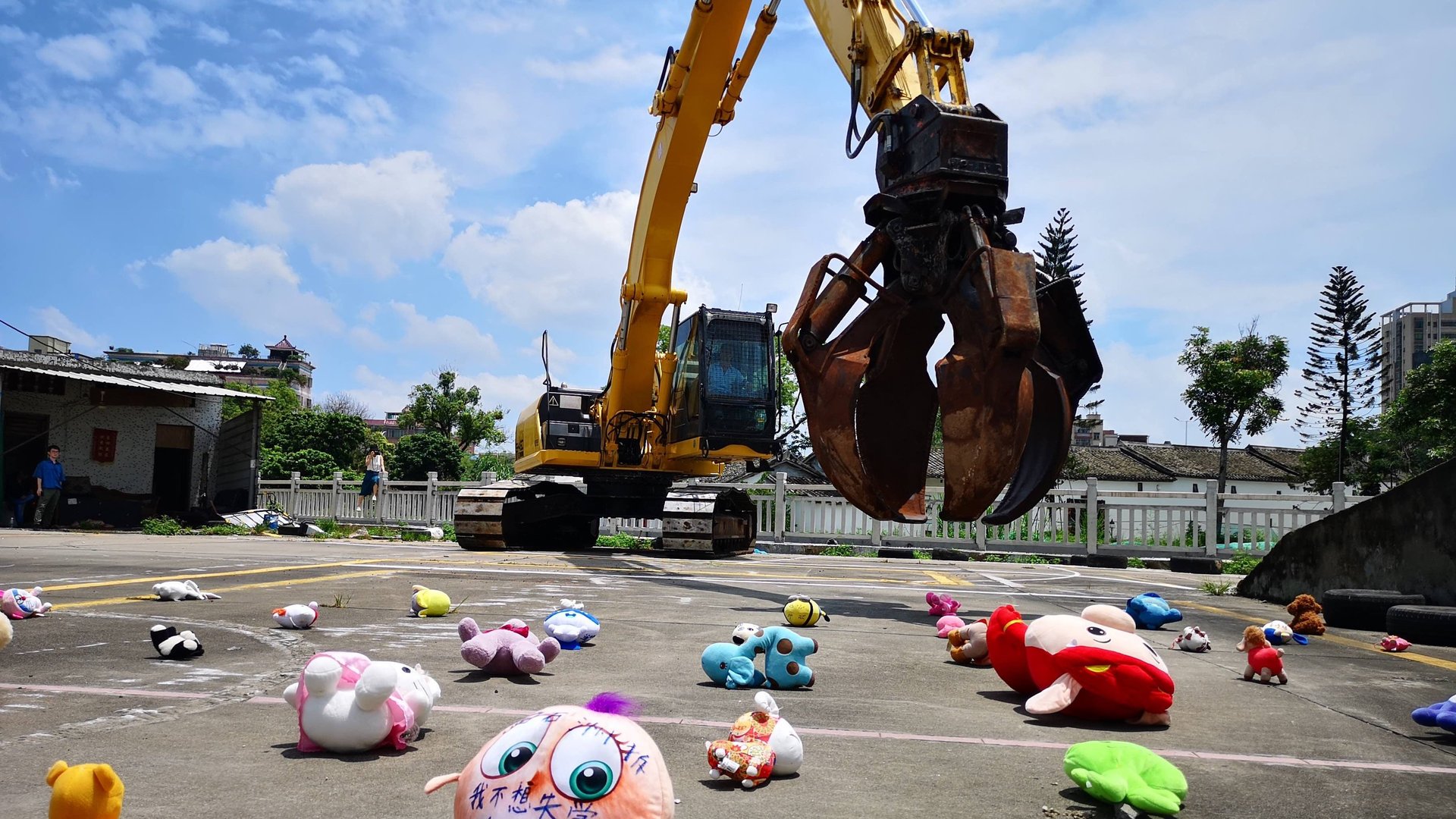

Chinese artist Brother Nut first made his name in 2015, when he made a brick out of the smog and dust he vacuumed out of Beijing’s heavily polluted air. Now he’s back with a set of eerie images of a real-life claw arcade game to draw attention to the people being kicked out of Shenzhen, China’s Silicon Valley, and other large cities.
Last month, the pony-tailed artist hired a claw-armed crane to pick up 400 soft toys from a lot in an urban village on the edges of Shenzhen and plunk them into a nearby river. Along the way he photographed the process, and this week began sharing the images online.
“We wanted to use this process to illustrate how migrant children are being abandoned by Shenzhen, just like the dolls are being picked up and thrown away by the giant claw machine,” he told Quartz.
There are close to 300 million migrant workers in China, accounting for over 20% of China’s population. It’s a group that has powered China’s economy, by taking jobs as factory workers to make the stuff China exports or as nimble delivery workers who make e-commerce possible. Despite that, the workers and their children are facing demolition of their homes and the prospect of having to return homes as authorities in China’s largest cities seek to recover land for new developments or, some speculate, to fuel real estate investment away from large cities.
Brother Nut said he embarked on his photo series when he heard in June about a planned eviction of a fresh group of families from Baishizhou, the biggest urban village in Shenzhen. The artist was once himself a resident of Baishizhou, home to around 150,000 people. Since it would be too difficult to find a place willing to display his photos, the artist said he’s trying to pay people small amounts to share the images on their feeds on messaging app WeChat.
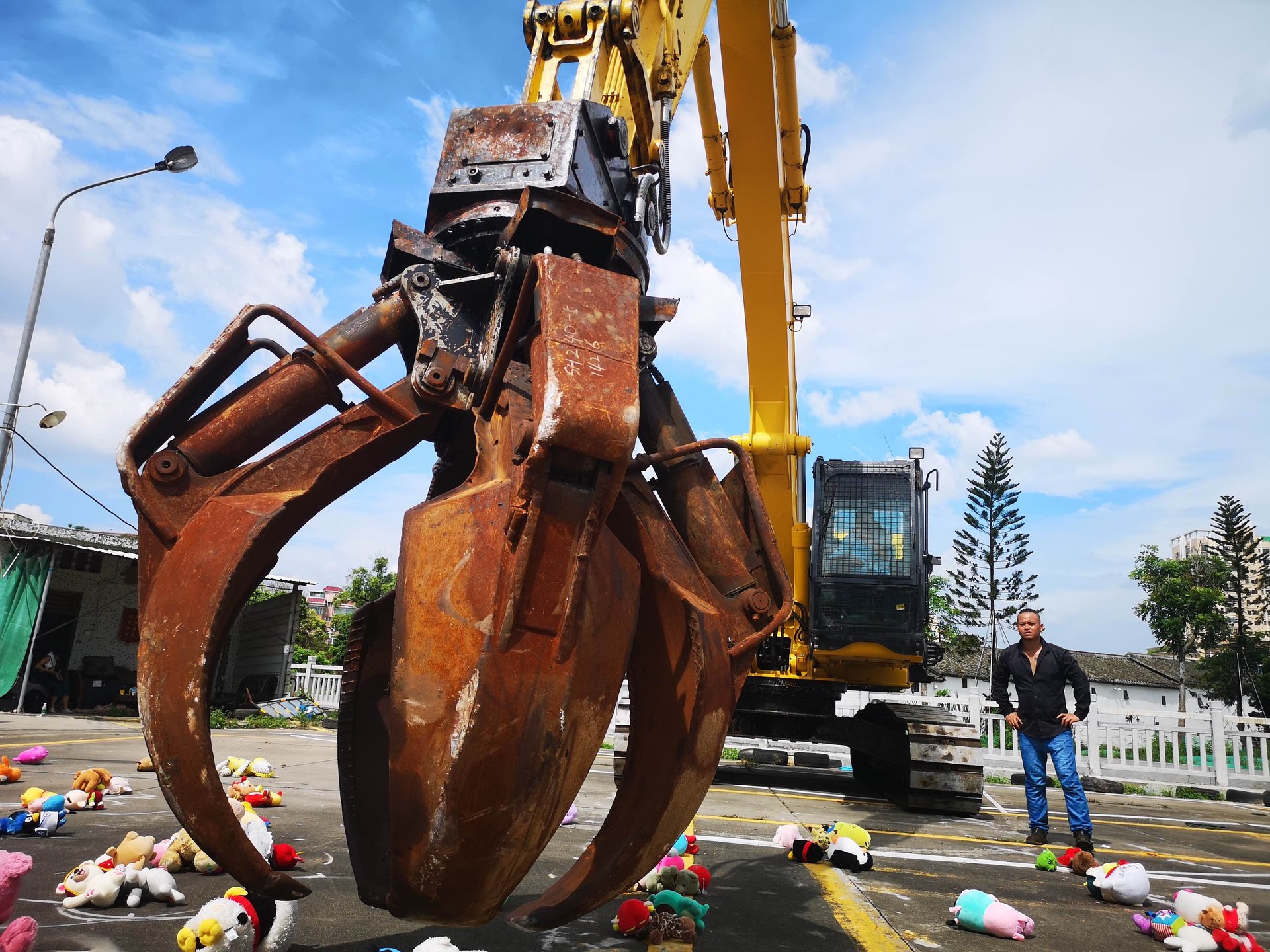
The families are due to be evicted from their home by September. Landlords have started to notify tenants of the 150 sq ft homes, most of whom are migrant workers, that they need to move by the end of this month, as the village is making way for a long-planned property development plan with malls and hotels wanted by the local government, according to Chinese media reports. The school year has already started, and the more than 4,000 migrant children who attend schools in the area could face problems finding new schools due to distance, if they end up relocating on the outskirts, and limited slots, according to the artist.
The district office of Nanshan, where Baishizhou is located, did not reply to a request for comment.
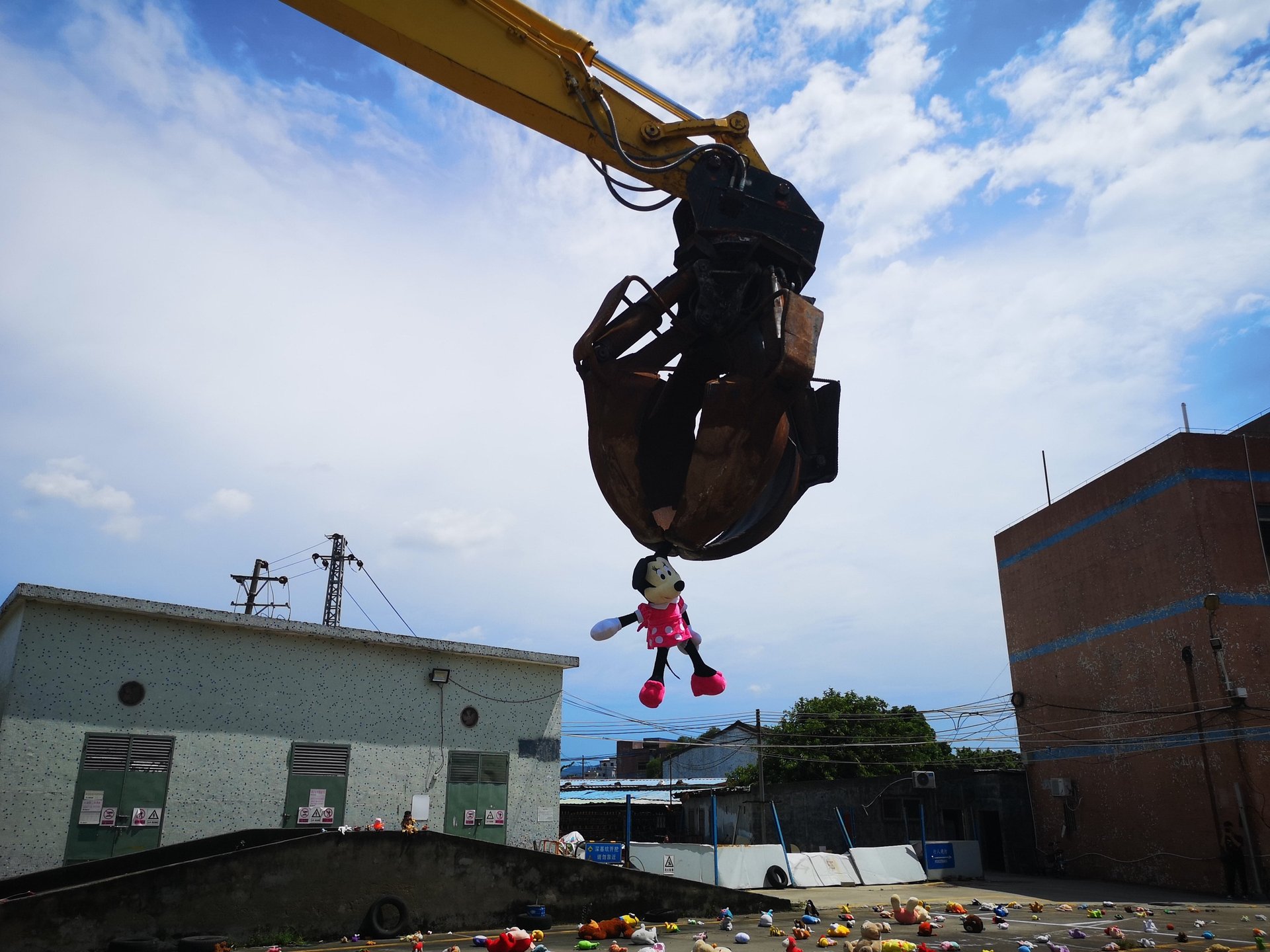
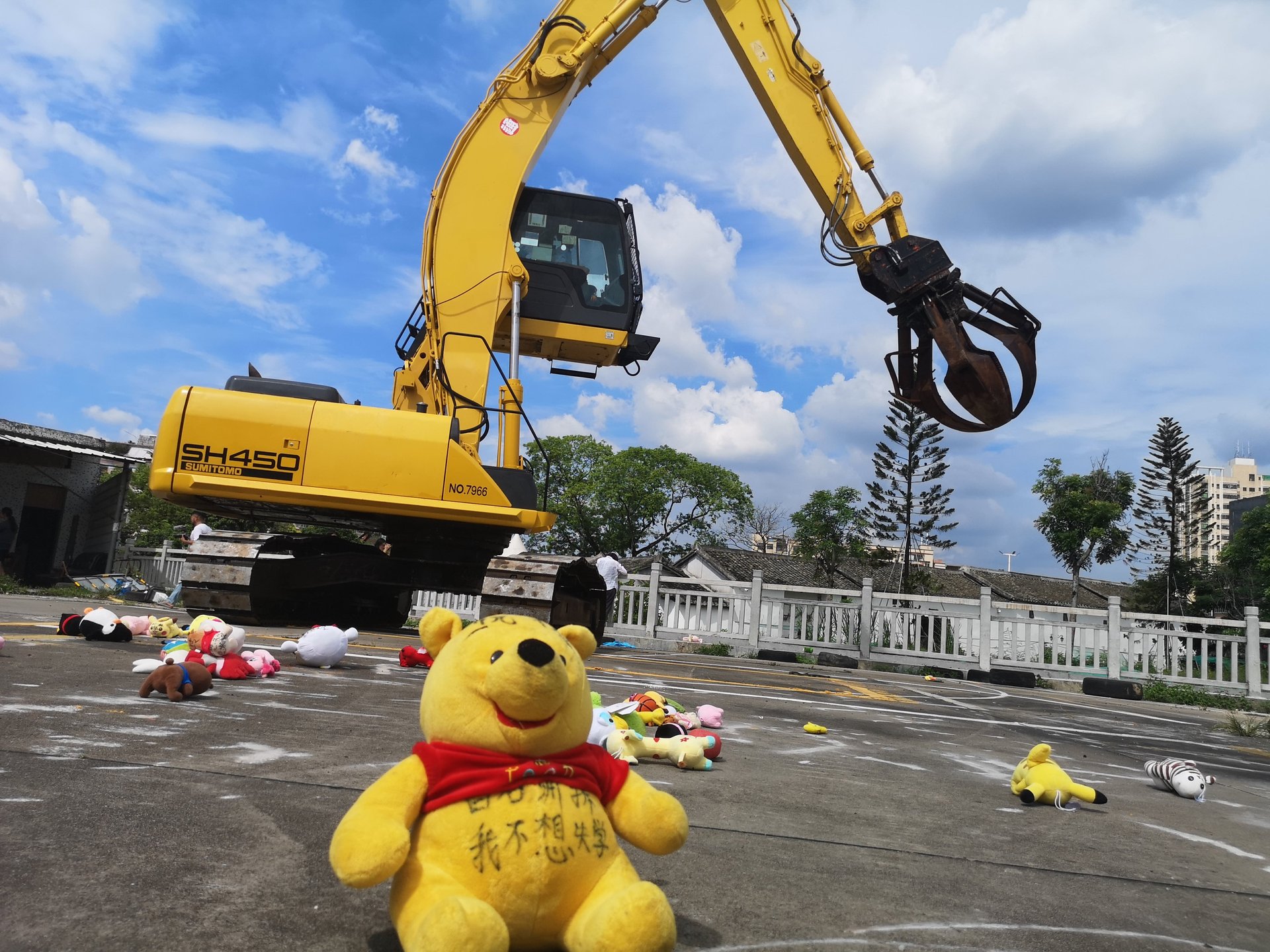
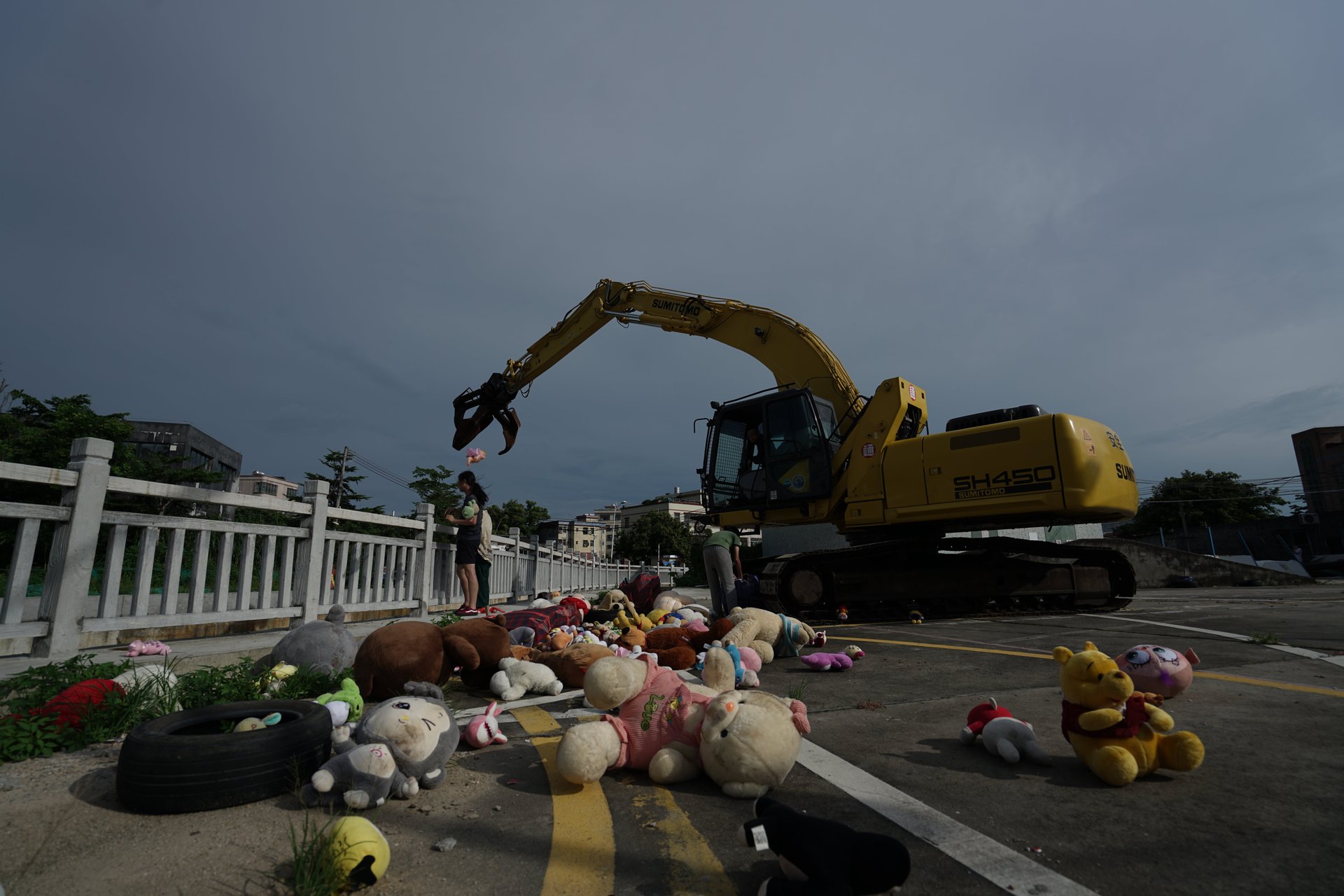
On each of the toys there is a message written by the child who gave it, such as “I don’t want to drop out of school.” The dolls were collected through the children’s parents, who joined the initiative after seeing posters distributed by the artist and his friends about the project. “Some children, naturally, didn’t want to give up their dolls. but after their parents said this is for helping them to stay in school, some of them were more willing to participate. But one child cried so hard about his doll being taken away, we had to give it back to him after finishing the project,” said the artist.
The artistic process might raise questions—couldn’t all the toys have been returned to their owners?—but Brother Nut said the children had other toys, and he hoped the photos would be able to draw attention to their situation, and get authorities try and resolve their school enrollment problems.
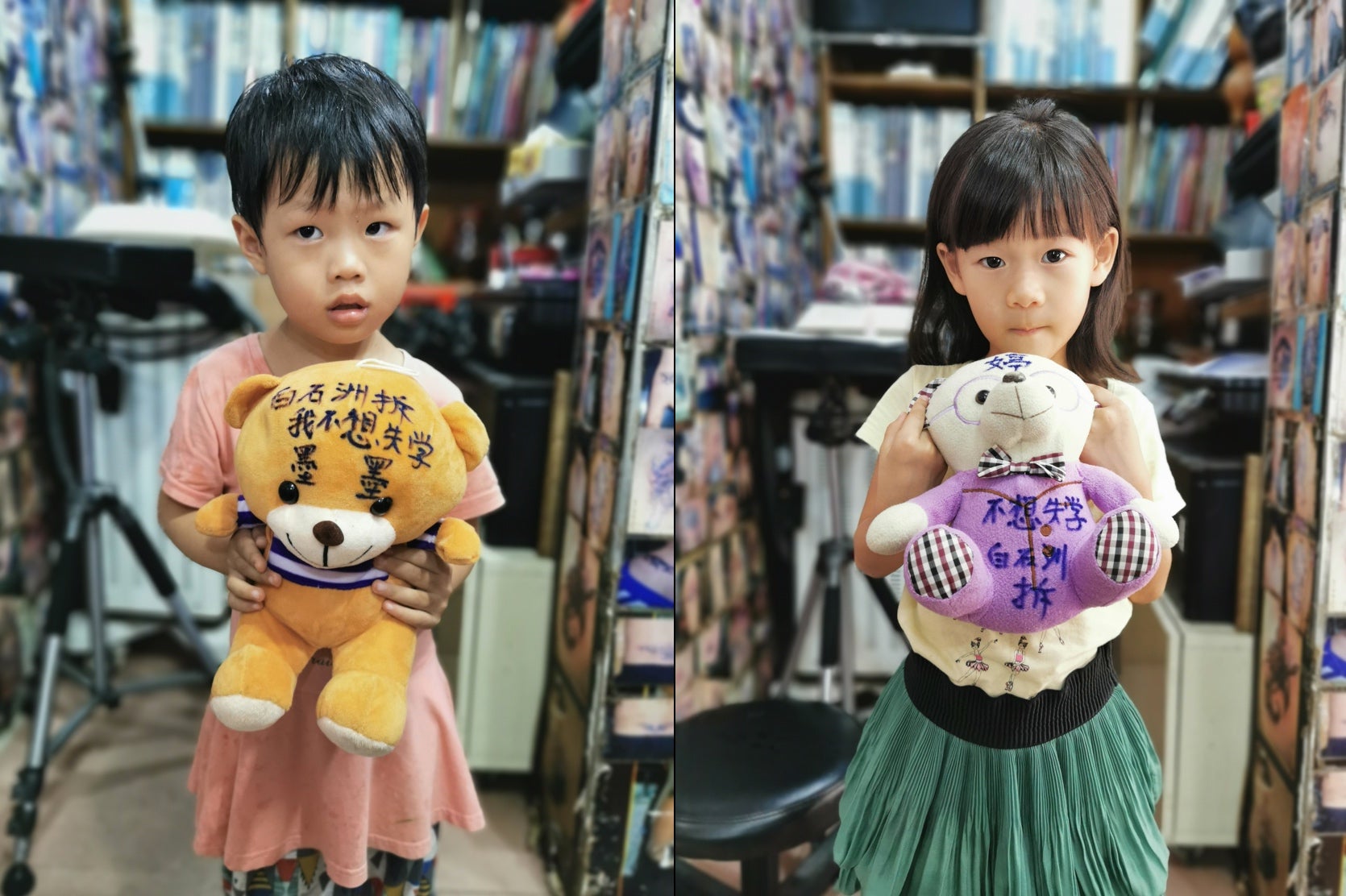
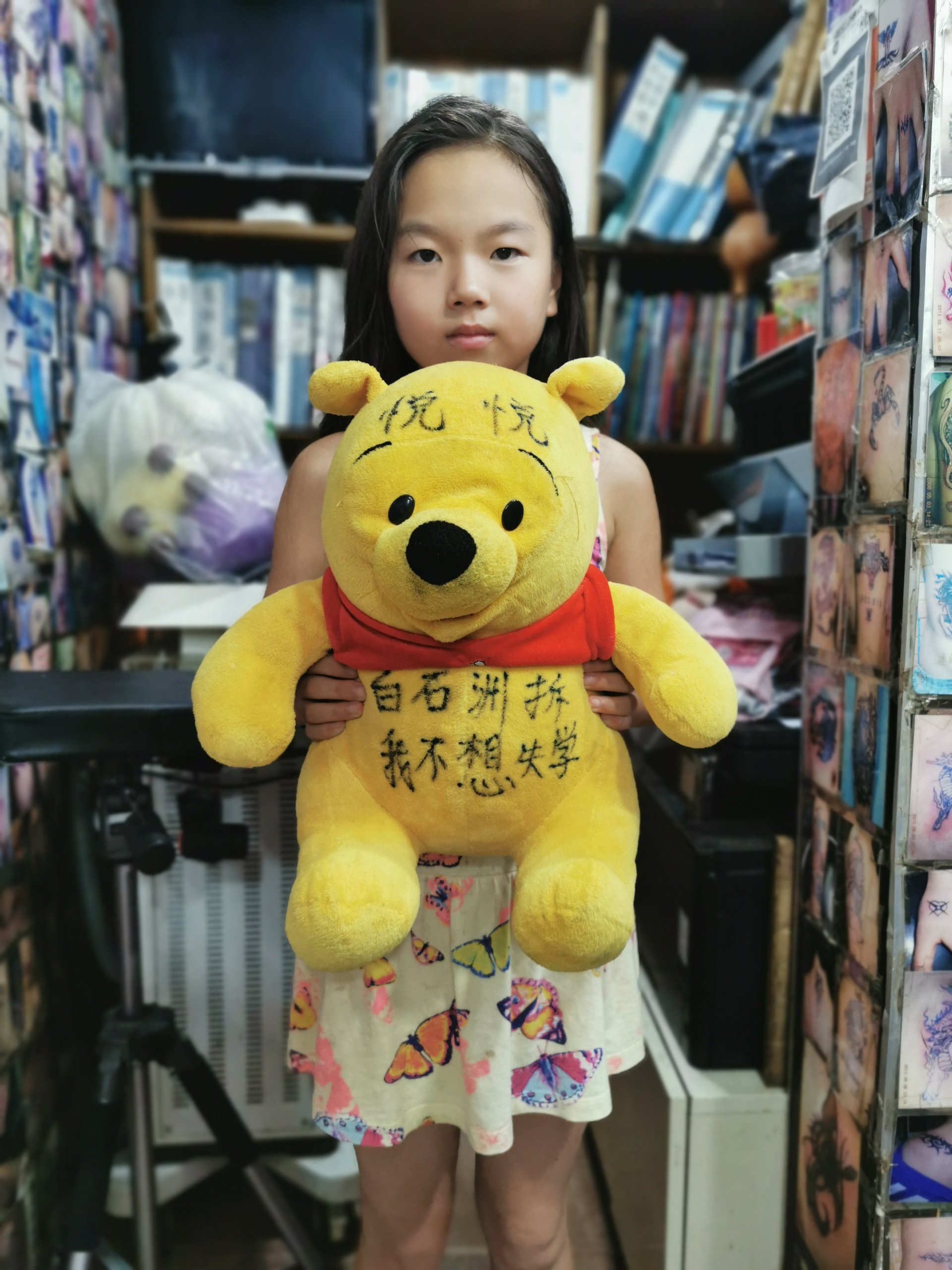
Not only children in Baishizhou, but many of the country’s more than 35 million (in Chinese) migrant children face similar problems. They lack attention from family members who work long hours, and have little in the way of support networks where they live. Also, due to the ”hukou“system, China’s address registration permits that are linked to public services, migrants are at a disadvantage to their urban peers as their children can’t be admitted to good public schools without local permits.